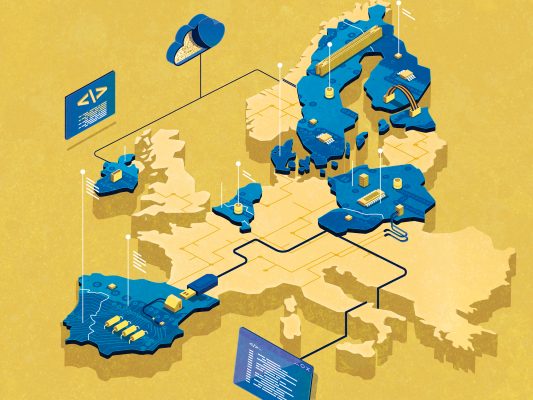For more than a year, lawyers across Italy waited to learn the results of a competition for coveted jobs in the finance, health, and environment ministries. Just before this month’s elections, hundreds received notices that they had won. They were summoned to Rome to implement as much of outgoing Prime Minister Mario Draghi’s COVID-19 recovery plan as possible — including its ambitious digital agenda — before a new center-right government takes over.
The winner of Sunday’s snap elections, Giorgia Meloni’s Fratelli d’Italia, wants to revisit the country’s recovery plan and reassert the country’s tech sovereignty. These will be tough goals to achieve. Political infighting and strong momentum behind Draghi’s recovery plan, which will bring billions of euros of EU funds into the country, will limit Meloni’s room for maneuver.
Fratelli d’Italia preaches tech nationalism. In an interview with CEPA’s partner, news site Formiche.net, FdI’s Alessio Butti said the party’s goal was to support local companies. Reversing current government policy, he sees China and the U.S. as equal threats to Italian tech sovereignty.
“Europe needs to find its own path,” Butti said. “It’s not worth considering whether we should be friendlier with one or the other, or if we should trust one more than the other. Sovereignty means developing our own companies, supporting research, creating jobs and innovation skills.”
Telephone infrastructure and the cloud will represent key tests. Butti suggested he was open to working with Chinese suppliers to build a 5G network. At the same time, he criticized the current government for working with American tech giants to build a new National Strategic Hub, an EU-funded recovery plan project that will host 75% of the country’s public administration data by 2026. The project has been entrusted to a consortium of Italian companies that will partner with an American cloud provider.
“For the cloud, the government’s mantra for months was: ‘We are behind and therefore we are forced to work with those who have the technology,’” Butti said. “This principle is unfounded. When it comes to the cloud, there are small Italian companies that operate at high levels.”
If so, they are too small to carry out the giant plan to host public data. When first announced, the government aimed for its strategic hub to be “located in Italy and controlled by Italians,” but it proved impossible to rely on Italian technological know-how, Italy’s outgoing Minister for Technological Innovation and the Digital Transition Vittorio Colao said. Draghi’s government has prioritized Italian companies for recovery fund projects in sectors where they do excel, such as infrastructure, so there’s no reason to think it would turn down viable Italian cloud computing suppliers.
Political realities further limit the incoming government’s room for maneuver. Fratelli d’Italia must partner with Lega and Forza Italia, which received 8.85% and 8.27% of the vote, respectively. Political jockeying will be fierce, with intense rivalries already developing even within the center-right coalition. There are also questions about whether Meloni will be able to recruit a competent cabinet capable of carrying out her agenda.
Draghi, meanwhile, has been preparing for the new government’s arrival. Since his government collapsed over the summer, he has been taking steps to ensure his pandemic recovery efforts outlive his time in office. Italy received the largest share of the EU’s coronavirus pandemic recovery funds, or €195.1 billion ($186.3 billion). Under the National Recovery and Resilience Plan approved last year, about a fifth of the money, or €40.29 billion, will go to “digitalization and innovation.” About €15 billion of the digital funds had already been earmarked as of July, digital minister Calao said.
Draghi has moved up ministerial timelines for the recovery plan. With their new recruits, ministries must meet 11 of the plan’s goals in September — instead of just three as originally planned. Under the current timeline, more than half of this year’s program will be implemented before a new government is seated, creating enough momentum to avoid renegotiating key policies. Any changes would also need to be approved by the EU. On September 27, the European Commission announced that Italy had made enough progress on implementing its plan to receive the next disbursements of funds, worth €21 billion.
Meloni may still try to halt tech reform to cater to her nationalist leanings. The new Prime Minister could attempt to restart tech cooperation with China. But the rest of Europe, which holds the pocketbook to pay for the country’s digital modernization, will be watching.
Janna Brancolini is a non-resident Fellow with the Digital Innovation Initiative at the Center for European Policy Analysis. She is an independent journalist based in Milan covering business, technology and sustainability for Bloomberg and the Los Angeles Times.




